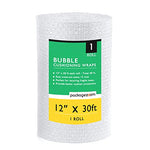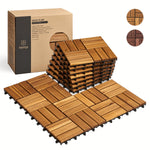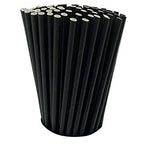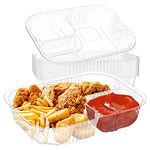You have no items in your shopping cart.
Recycling has become a crucial aspect of modern living, with people looking for eco-friendly ways to reduce waste and conserve natural resources. Wood, being a widely used material in construction and various other industries, raises the question: Can you recycle wood? In this comprehensive guide, we will delve into the world of wood recycling, exploring its benefits, the recycling process, and innovative ways to reuse wood effectively. By the end of this article, you'll have a profound understanding of how you can contribute to a greener environment by recycling wood.
Can You Recycle Wood?
Many people wonder whether wood can be recycled. The answer is a resounding yes! Wood recycling is not only feasible but also environmentally responsible. By recycling wood, we can significantly reduce the burden on landfills and save valuable resources. Let's dive deeper into the wood recycling process and discover its advantages.
The Wood Recycling Process
Recycling wood involves several essential steps, ensuring that the material is repurposed in an environmentally friendly manner. The wood recycling process typically includes the following stages:
-
Collection of Wood Waste: The first step in wood recycling is collecting wood waste from various sources, such as construction sites, demolition projects, manufacturing facilities, and households.
-
Sorting and Inspection: After collection, the wood waste is sorted to separate clean wood from treated or painted wood, as the latter may require special handling due to chemical contamination.
-
Grinding or Chipping: The sorted wood is then processed through grinders or chippers to reduce it into smaller pieces, making it suitable for further use.
-
Contaminant Removal: In this stage, any remaining contaminants, such as nails, screws, or staples, are removed from the wood to prevent damage to recycling equipment.
-
Reprocessing: The clean wood chips are reprocessed into various products, such as mulch, compost, engineered wood products, or biomass fuel.
-
Distribution: The recycled wood products are then distributed to end-users, like landscaping companies, power plants, or furniture manufacturers.
Benefits of Wood Recycling
Recycling wood offers a myriad of benefits for the environment, the economy, and society as a whole. Let's explore some of the significant advantages:
-
Conservation of Resources: By recycling wood, we reduce the demand for new timber, conserving forests and biodiversity.
-
Reduction of Landfill Waste: Wood waste is a significant contributor to landfill waste. Recycling wood helps divert this waste from landfills, where it would decompose and release harmful greenhouse gases.
-
Energy Savings: Reprocessing wood requires less energy compared to manufacturing products from raw materials. This results in reduced energy consumption and lower carbon emissions.
-
Economic Growth: The wood recycling industry creates job opportunities and contributes to economic growth.
-
Lower Carbon Footprint: Recycling wood minimizes the carbon footprint associated with its disposal and production, making it a greener alternative.
-
Promoting Sustainability: Opting for wood recycling supports sustainable practices and fosters an eco-conscious mindset.
Creative Ways to Reuse Wood
Recycled wood has endless potential for creative reuse in various DIY projects and construction applications. Here are some innovative ways to give discarded wood a new life:
-
DIY Furniture: Use reclaimed wood to create unique and rustic furniture pieces, such as tables, shelves, or headboards.
-
Garden Planters: Build garden planters or flower beds using recycled wood, adding a touch of charm to your outdoor space.
-
Art and Decor: Turn old wood into wall art, photo frames, or decorative wall panels to add a rustic aesthetic to your home.
-
Wooden Pathways: Design pathways or walkways in your garden or backyard using recycled wood for a natural and eco-friendly look.
-
Firewood: If the wood is not suitable for recycling, repurpose it as firewood to stay warm during the colder months.
-
Pet Houses: Create cozy pet houses or beds for your furry friends using recycled wood, making them feel loved and cared for.
FAQs
Q: Can you recycle pressure-treated wood? A: Recycling pressure-treated wood can be challenging due to the presence of harmful chemicals. It's best to contact a specialized wood recycling facility for guidance.
Q: Is wood recycling cost-effective for businesses? A: Yes, wood recycling can be cost-effective for businesses, as it reduces waste disposal costs and may generate revenue from recycled wood products.
Q: Can painted or varnished wood be recycled? A: Painted or varnished wood can be recycled, but it requires additional processing to remove the surface coatings.
Q: How can I find wood recycling centers near me? A: You can use online directories or contact your local waste management authorities to find wood recycling centers in your area.
Q: What types of products are made from recycled wood? A: Recycled wood is used to produce mulch, compost, engineered wood products, biomass fuel, and even paper.
Q: Is wood recycling better than sending wood to the landfill? A: Yes, wood recycling is a more sustainable option than sending wood to landfills, as it reduces environmental impact and promotes resource conservation.
Conclusion
In conclusion, the answer to the question, "Can you recycle wood?" is a definite yes. Wood recycling offers a plethora of benefits, from conserving resources and reducing landfill waste to promoting sustainability and supporting economic growth. By incorporating creative ways to reuse wood, you can actively contribute to a greener and more environmentally friendly future. So, the next time you come across discarded wood, consider recycling or upcycling it to make a positive impact on the environment and society as a whole.








